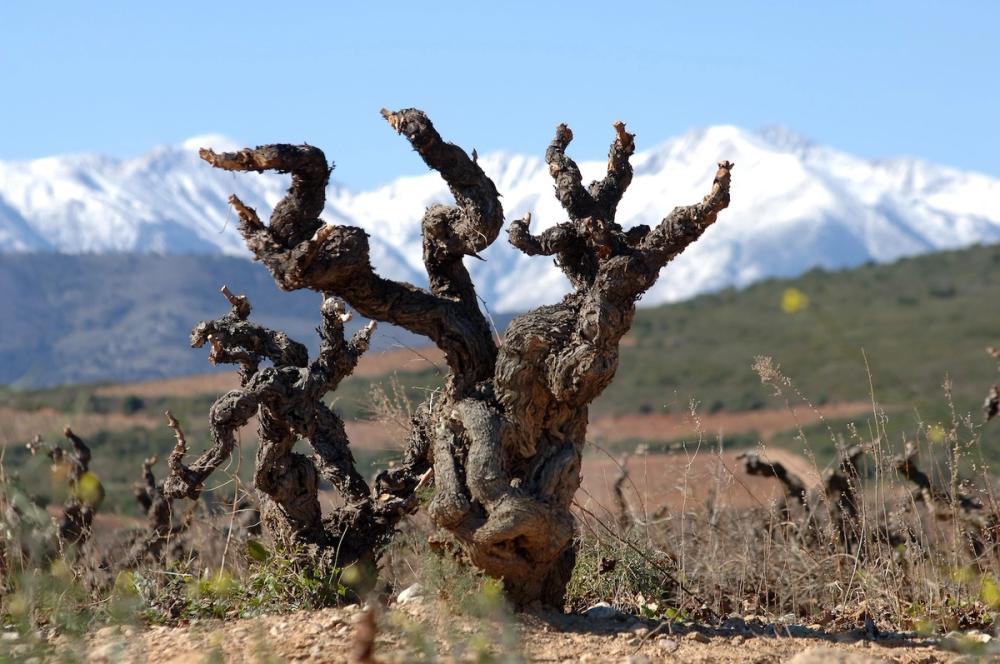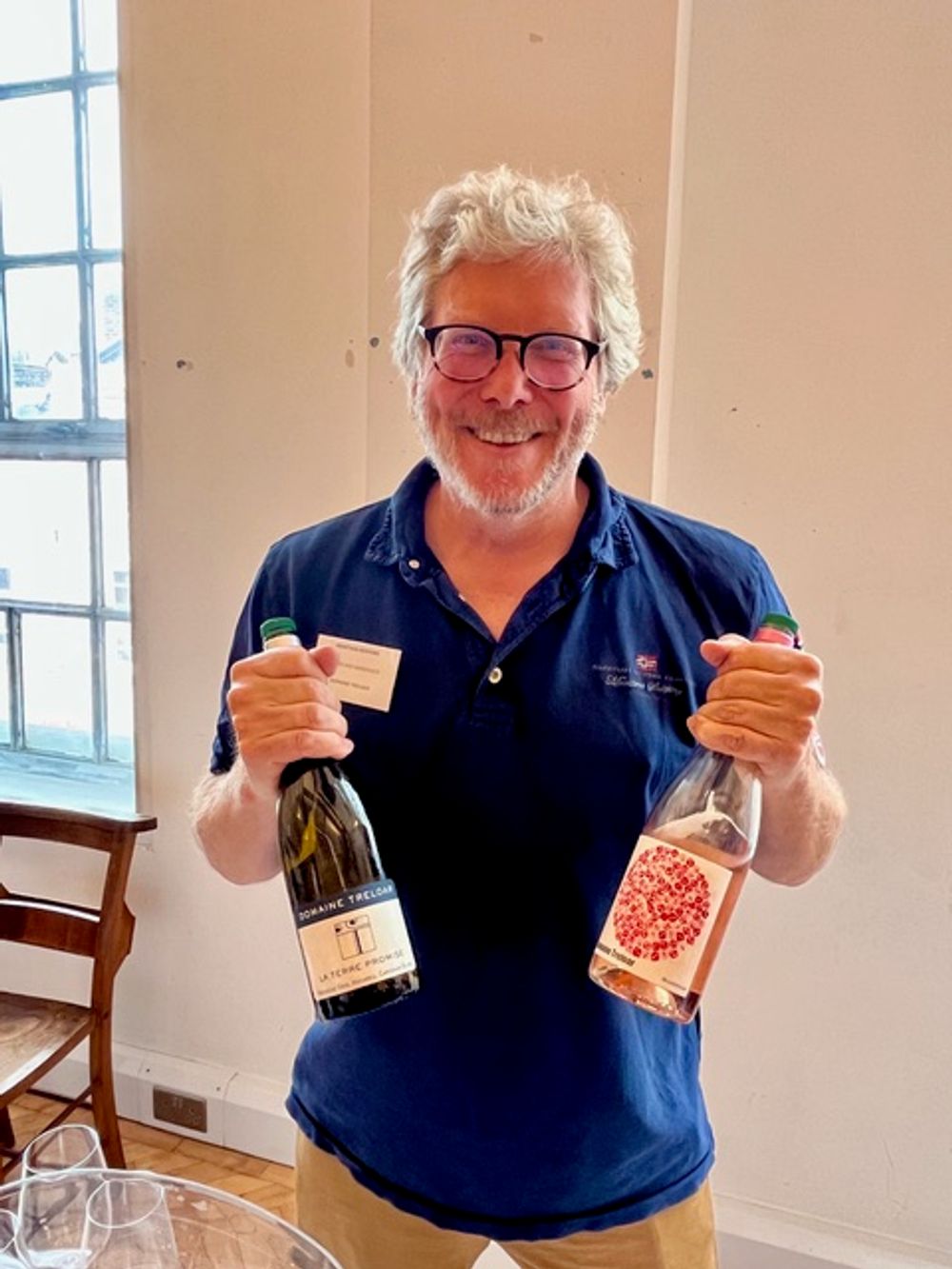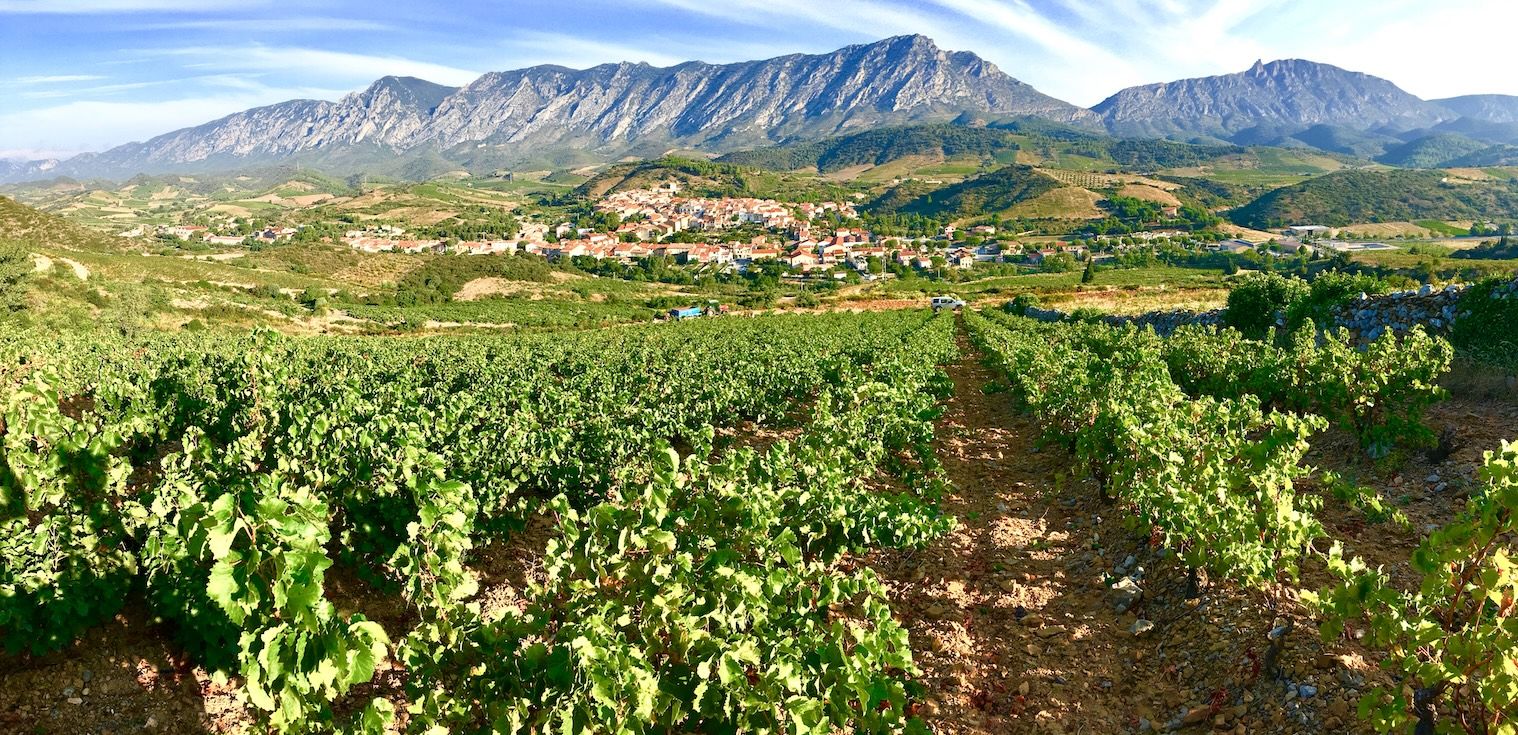If asked to name the most unlikely place in France for the production of great white wines, Roussillon would be a good contender. Tucked into the Mediterranean curve that joins France to Spain, its hot, sunny, dry Mediterranean climate is ideal for the production of rich red and fortified wines. It is a surprising place to look for quality whites, so why is it making some of France’s most characterful?
It was a question that occurred to me repeatedly at the recent Roussillon tastings, where the white wines really stood out for their distinctiveness. It’s not to take anything away from the quality of the reds, which are the majority of the region’s production, or the impressive Vin Doux Naturel wines which represent the historical output of the area.
There is an intense textural quality to the wines of Roussillon that inspires comparison with top Côte d’Or blanc and Chablis. With indications of declining red wine consumption, could white Roussillon be an important area of interest over the coming decades?

Le Soula - planting more white than red
Mark Walford of Le Soula, one of the chief proponents of white Roussillon has already seen it happen. “We are planting more white than red,” he says. “Much as we love our red, the market has become extremely receptive to Le Soula’s Blanc. Where it goes, the red is often able to follow.”
But what makes white Roussillon special? Part of it is certainly down to the region’s uniqueness. An unusual hybrid of French administration and Spanish Catalan heritage, hemmed in by three mountain ranges, divided by three rivers, buffeted by eight winds, including the powerful Tramontane from the north, Roussillon has complex and varied soils and exposures, a robust selection of local grape varieties, and character in spades.
Deep roots, old vines

300 days of sunshine is a benefit and a hazard, especially for older, less drought-resistant varieties
One of the most characteristic features of many of Roussillon’s best whites is that they come from vines on the higher parts of the hills, with deep roots and careful soil management aiding in the retention of low pH in the final wines, and adding an unexpected freshness and tension despite technically low acidities.
It’s sunny here for around 300 days of the year, compared to about 60 in England. That’s both a benefit, in terms of ripeness, and a hazard, with increasingly dry conditions threatening both young vines and more established, but less drought-resistant, varieties.
Vines tend to be dry-farmed. Although small amounts of irrigation are permitted and even necessary in view of the increasingly arid conditions in the region, many vignerons understand that the most sustainable and strategic option is to encourage the vine’s roots to go deep enough to find their own sources of water.

Wendy Paillé: With drought damaging existing vineyards, the planting of new ones is contingent on the arrival of rainfall
Water is everything here. “To rejuvenate our vineyards, to expand, we need water,” Wendy Paillé, winemaker at Le Soula, explains. “We collect rainwater from the roof of our building and we can store 40,000 litres.” But this is barely enough for a single season. With drought damaging existing vineyards, the planting of new ones is contingent on the arrival of rainfall.
Eminence Gris

Jonathan Hesford, winemaker at Domaine Treloar
Thirty years ago only 10% of Roussillon’s wine production was dry and white. Today around 38% of the region’s 23,000 hectares are white grapes. A wide range of grapes are important both for quality and volume:
Macabeo is perhaps the most significant grape for dry whites, with 1490 hectares. It has thick, heat-resistant skins that help to add structure and concentrated, fleshy berries that give texture and mid-palate fruit. The main drawback is that the acidity of the grape can drop suddenly and dramatically, resulting in a flabby wine, so picking dates are all-important.
Grenache Blanc is a mainstay of the AOP regulations for white, but some producers find its low acidity and neutral palate difficult to work with, so they blend accordingly. For Jonathan Hesford, winemaker at Domaine Treloar it provides “richness, oiliness and an oxidative quality which can make wines taste a bit Sherry-like.” It is also very drought-resistant, naturally ripens well, and can reach high alcohols. It is planted over 1283 hectares.
Grenache Gris is appealingly spicy and savoury in flavour and brings mineral sensations and length as well. Producers like Hesford feel positively about it: “Grenache Gris is a very high-quality grape. I think it is the finest white grape in the Roussillon. The problem is that many of the old vineyards of white and gris grapes have already been dug up because they were not valued by the cooperative growers.” Nonetheless, plantings are now increasing, and Le Soula has put 0.4ha into the ground in the hope that it will take. The variety currently accounts for 1056 hectares.
Carignan also exists in both Blanc and Gris versions, both specialities of the region, but planted to less than 25 hectares each. Where growers are able to utilise them, they provide highly desirable acidity when blended with other lower-acid varieties such as Grenache Blanc.
Rolle/Vermentino (155ha) is currently the fastest growing white grape in the region and is an important component in some of Roussillon’s best whites, such as Le Soula Blanc, where it adds a complex aromatic dimension. Recent dry vintages have, however, challenged its drought-resistance.
Chardonnay (509ha), Viognier (118ha) and Sauvignon Blanc (67ha) are also planted, although most growers seem to have little to say about them, suggesting they are often of utility value in blends, for acidity or aromatics, or exist to perk up labels with some name recognition. Both Viognier and Sauvignon Blanc plantings are decreasing.
There are plantings of Roussanne (80ha) and Marsanne (30ha), but the Roussillon has started to look beyond France for the next generation of drought-resistant white grapes, with varieties such as Xarel-lo and Assyrtiko going into the ground in recent years.
Many producers are positive about the quality potential for Malvoisie de Roussillon/Tourbat (26ha) which is probably of Spanish origin, but which likely arrived in France indirectly, via Sardinia.
Last but literally not least, the Muscats. Both Muscat Blanc à Petits Grains (2135ha) and Muscat of Alexandria (1801ha) were planted for the sweet Muscat de Rivesaltes wines and are increasingly being used for pleasant, early-drinking dry wines, but tend not to feature significantly among the best white wines of the region except occasionally as seasoning in a blend.
This wide range of white varieties contrasts sharply with France’s more famous controlled white wine districts in Burgundy, the Loire and Bordeaux. It makes Roussillon one of the more dynamic of France’s wine regions, but when it comes to marketing and selling the wines, it also poses major challenges in terms of consumer expectations, or any attempt to find a common style across the region’s white wines.
A gamut of styles
Four appellations are used for the bottling of dry white wines:
IGP Côtes Catalanes
IGP Côte Vermeille
AOP Côtes du Roussillon
AOP Collioure
When it comes to the AOP wines, the Côtes du Roussillon Villages appellation is exclusively for red wines, meaning the best whites don’t have an extra tier above the regular AOP to help them stand out.
Any white wine that contains a majority of Grenache Gris, or more than 10% Carignan Blanc or Carignan Gris must be labelled under IGP Côtes Catalanes and is disbarred from AOP status, despite the fact that many producers consider these varieties among the best the region can offer for white wines.
As a result of this rigidity, most whites are bottled under the IGP of Côtes Catalanes, where multiple varieties are permitted, creating a sort of ‘Super Roussillon’ category (similar to the early Super Tuscans) that contains many of the region’s very best wines.
“Currently a consumer can buy an IGP Côtes Catalanes that is 100% Muscat, 50/50 Viognier/Chardonnay or 60/40 Grenache gris/Carignan blanc,” Hesford says. Having such radically different styles of wines under the IGP classification isn’t unusual, but it does little to establish an identity around Roussillon’s whites.
All this has caused a considerable amount of discontent among producers, and for obvious reasons. As Hesford puts it, “Collioure blanc is perhaps the only AOP with a consistent style. The IGP Côtes Catalanes rules allow cropping at up to 90hl/ha (which is huge considering the rainfall and poor soils) and that means that there are some pretty poor examples of white wine under that label, as well as some of the best wines in the region.” There are indications that the IGP and AOP regulations are up for review, but whether it will result in significant change is currently unclear.
Perhaps the most sensible proposal would be to enshrine within the AOP regulations the well adapted local varieties — the two Grenaches, the two Carignans, Macabeo — and insist that they are released either as varietal wines (e.g. 100% Grenache Gris), or form the majority of a blend, with other varieties, such as Vermentino or Roussanne, permitted to make up the rest. That would allow Roussillon to develop a distinct regional style at AOP level, and leave IGP wines for everything else, including the dry Muscats.
A white future?
Any changes will come slowly and take years to implement so for now the producers are on their own. But Hesford at Treloar is positive. “I’d say the future is bright. The top wines should really be priced alongside the best whites of the Rhône. There is also a vibrant scene for natural and orange wines in the region to complement the more traditional styles.“
Climate change will prove the most immediate threat, but the latest reports from the region indicate that at this point in 2024 the producers have had some much-needed rainfall - but is it enough? The overall trend makes for difficult reading with cumulative rainfall decreasing year on year for the past five years – 530mm in 2020, down to 192mm in 2024.
When winter rains are too low the end result is that feeder roots and fine root hairs are brought closer to the surface which, on free-draining soils like schist, compounds the problem. Two months ago the grapes were looking very strong, and there was even talk of a green harvest with some growers, but today the yields are significantly down - by 50% in many cases – which means new plantings and viticultural advancements are put on hold, posing an ongoing challenge to Roussillon’s highly promising white wines.
Tasting Highlights:
Le Soula Blanc 2018, IGP Côtes Catalanes
One of the signature whites of the region, this blend changes year to year. The 2018 is led by Rolle/Vermentino with Sauvignon Blanc, Grenache Blanc, Marsanne, Roussanne and Macabeo. Bone dry with good acidity, this is a ruggedly characterful white with a tangy, salted grapefruit edge and Manzanilla-like pungency. 13.5%
Domaine Treloar, La Terre Promise 2022, IGP Côtes Catalanes
Showcasing Hesford’s beloved Grenache Gris (70%) and Carignan Blanc (30%) this is an outstanding field blend wine and delivers bright red apple and green banana fruit alongside elusive cereal and tahini notes and a subtle fleshiness of texture. Persistent and thought-provoking, it is just 10% of his production. 13.5%
Domaine Gardiés Clos des Vignes Blanc 2022, AOP Côtes du Roussillon
Intense and structured with marked oak but a strong spicy character from the Grenache Gris muscling through, this has slightly unresolved banana bread and coconut flavours from the wood. A year in bottle should help it all to integrate. 13.5%
Domaine de Bila Haut, Sélection Parcellaire Chrysopée Blanc 2020, AOP Collioure
90% Grenache Gris, 10% Grenache Blanc. Muscular, long and herbal with a note of melon, and honey and spice from 100% oak maturation. Bone dry and very persistent this is an amply structured, ambitiously-scaled white that is the highlight of the Chapoutier Roussillon project. 14%
Domaine Madeloc Tremadoc Blanc 2022, AOP Collioure
Banana and apricot jam lead the nose on this fleshy, full-flavoured blend of Grenache Gris, Rolle/Vermentino and Roussanne. Superbly balanced, it showcases how Roussillon’s whites can delivery heady fruit character while still remaining structured and refreshing. 14%
Domaine La Part des Anges Parcelle Secrète 2022, IGP Côtes Catalanes
A rare 100% Carignan Blanc from David Loiret, this centenarian vineyard on granite and gneiss was picked in late September and early October. Linear, smoky and tense, this shows off the mineral stamp that makes Roussillon’s whites so distinctive, as well as demure flavours of peanut, parsnip and a touch of starch on the finish. 13.5%
Château de L’Ou, L’Ove Blanc 2019
A 100% Grenache Gris fermented with selected yeasts in eggs over seven months, this is rich and spicy with quince and hazelnut notes alongside banana, with a distinctive glycerol-rich but bone-dry texture. A great example of Grenache Gris’ versatility and character. 13.5%
































